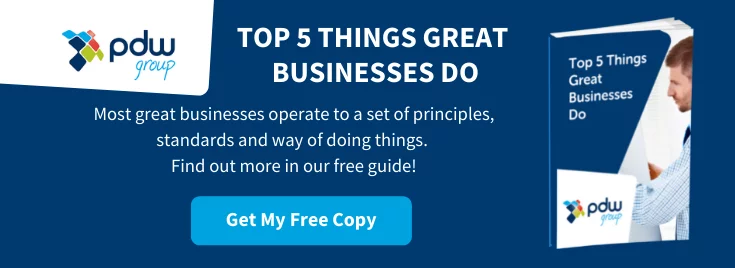
The Expert Client Engagement Model Your Business Needs To Follow
"Client centric" is a phrase I hear frequently in my work, and professional services has its fair share of service providers who claim to be "client centric" or at the very least say that have an aspiration to be so.
So what is 'being client centric'? "A specific approach to doing business that focuses on the client, ensuring that they are at the centre of their business's philosophy, operations and ideas.
The reality is that of the professional services firms that believe they are client centric, far fewer are really demonstrating it. The fundamentals of client centricity are of course listening to clients and their views of your business, but much more than that, truly client centric businesses are proactive in asking and capturing client opinion. They measure it, they share the insights that this provides, they thank their clients for it and they absolutely act upon it, both tactically in the moment, and strategically as to how key client messages should shape their business. Finally, they then communicate back to the client what has and has not been done as a result of this insight, and why.
The above picture is an incredibly powerful approach to building client engagement, and therefore driving firm profitability way ahead of the market. We know this because we have seen the correlation between firm financial performance and how well (or not!) they generate high client engagement across a number of examples. In short, the link is undeniable.
In fact, I have even been known to say to some Managing Partners and Marketing Directors, "why don't you stop spending every pound that you currently spend on central marketing activity, and simply invest more time in building and harvesting your advocates"? Whilst there is an element of playful 'tongue in cheek' about this statement, a big part of me believes that this would pay a much higher rate of return in terms of the quantity and quality of new business prospect opportunities generated via referrals than most brand or service orientated traditional marketing activities ever do. Add in to this the fact that many professional services businesses don't properly target or measure the effectiveness of their activities and can't properly define their ROI anyway, you can see my point.
But what do we mean by client engagement? Typically this covers three areas that are 'music to the ears' of any professional services provider. Satisfaction, the client is very happy with the service and value they receive for the fee they pay; Loyalty, the client intends to stay being a client for the foreseeable future; and Advocacy, the client would recommend or promote the provider to others in their network as a 'great supplier'.
I don't meet many professional services providers who would disagree that in an ideal world they would like to achieve world class client engagement. I do however meet many who either don't really know how to do it, and/or simply question whether it is worth investing the time, money, effort and energy required to achieve it. I can understand why many firms have just grown in line with the market steadily for years, not really doing anything different and are performing...well, sort of OK, and in some cases not bad at all. So if that's the case, why seek to be world class when 'good' might be good enough?
Furthermore, many firms make the mistake of believing that just because a client remains a client, doesn't formally complain and pays their bill, that they are an advocate. This couldn't be further from the truth, and many UK banks are a case in point with often a swathe of current customers who have not yet moved banks, but would not recommend them either.
Anyone who has read Jim Collins' book, 'Good to Great' (and if you haven't I'd recommend it!) will know that Jim and his team identified from their very powerful research into what makes great businesses great, that 'good is the enemy of great'. What this essentially means is that a business will never be world class (as far as its clients are concerned) if their culture is to set the bar lower than that.
So the first thing to ask yourself and your senior colleagues is how important it is for you to be the best in your business, and to be able to demonstrate client engagement that is notably better than your competitors? If the answer is anything other than a resoundingly positive 'VERY IMPORTANT', then reading this article any further is rather pointless.
If you genuinely want to be viewed as 'world class' by your clients, create a huge proportion of advocates and demonstrate a robust competitive edge as a result, then you will almost certainly have to change some things, invest in some things, and improve some aspects of what your business does and how it does it.
First though, let's be clear. Competitive edge does not come from your products and services. If you're a small to medium law firm or accountancy firm, then I can almost certainly buy the same products and services that you can offer me from a number of other providers not too far from wherever you are based. Furthermore, almost whatever your fees are, I can get those services cheaper somewhere, if that's what is most important to me.
The reality is that competitive edge comes from 'HOW' you deliver your services, and 'HOW' you make me feel as a client, and that is about two things. 1) Your people and their behaviour and 2) how your processes, systems, procedures and infrastructure enables your people (as opposed to disables them) to deliver a world class service and outcome for the client.
Unfortunately, I see far too many firms just doing what they've always done, just getting their fair share, not challenging themselves to be better, frankly fearful of change or pushing their own boundaries, and demonstrating all the creativity and flexibility of a double door wardrobe in the process.
I am also privileged to work with a number of firms who genuinely want to know what their clients think, and how their clients can help to shape their own businesses, as well as having the courage to do something different for the purposes of improving the client experience, which in turn boosts their own profitability. These are the firms that are most likely to achieve their agreed definition of greatness and safeguard their long term future.
You might think this is in danger of being all a bit subjective. How do you know when you achieved 'world class' engagement? Well, whilst there is an element of personalised definition firm by firm, it can be measured, and very robustly. The globally recognised 'net promoter score' is used to do just that, and large corporates all over the world publish this data as a KPI and there is a plethora of benchmarking data available if you look.
Our work at PDW Group includes this measurement, and so we are close to the best, the worst and the 'average' particularly in professional and financial services, so we know what great looks like. This means that we can track the progress of whatever investment you make into your infrastructure and way of doing business, as well as your people and their behaviour.
But how do you actually boost your net promoter score, improve client engagement and ultimately enjoy the benefits that this can bring? Well this is a complex area in some ways which requires much more space than I have here, but in many ways it is very simple. We wrote a book some years ago called 'The Five Pillars of Advocacy', and in it we cite just five key areas that any business must be deemed as 'very good' at by their clients in order to maximise client engagement.
These five areas include the way a firm invests its time in building client relationships that are about what the client wants, not the way the supplier wants it. It includes how well the client feels 'understood' by the firm, and how well the firm is seen as 'adding value' or going 'above and beyond' just delivering or implementing the service. It also includes key foundational areas like keeping promises, being clear on their terms and fees, and simply making themselves easy to do business with.
So if the attraction of profitability ahead of the market, a robust benchmarkable measurement of client engagement and a feeling that you really could be talked about as 'world class' by your client base interests you, then your starting point is to get a line in the sand as to what level of engagement you actually have right now. Once you've done this, the initial results may surprise you, either positively or otherwise, but either way, at least you'll know...and once you know, you'll be able to put a plan in place to improve it, wherever you start from.
Once this is under your belt, you can work towards making client engagement measurement cultural within your business. You can begin to, and be seen to communicate these messages both internally to your teams and externally to your client base, and act upon them tactically, as well as ensuring the key messages contribute to the shaping of your business over time.
Only then can you with any conviction, refer to your firm as being truly 'client centric', and look in the rear view mirror as you leave your competitors behind.

